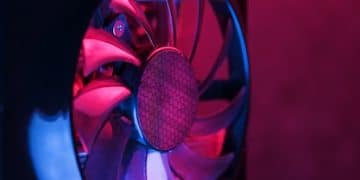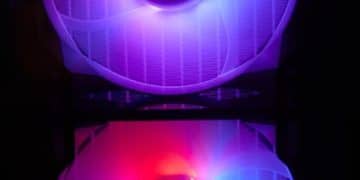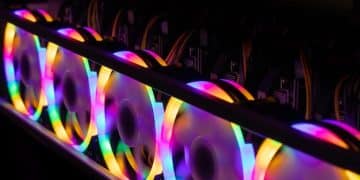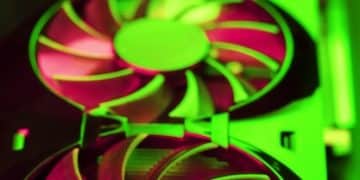Boost Your Rig: Liquid Cooling for Overclocking Guide
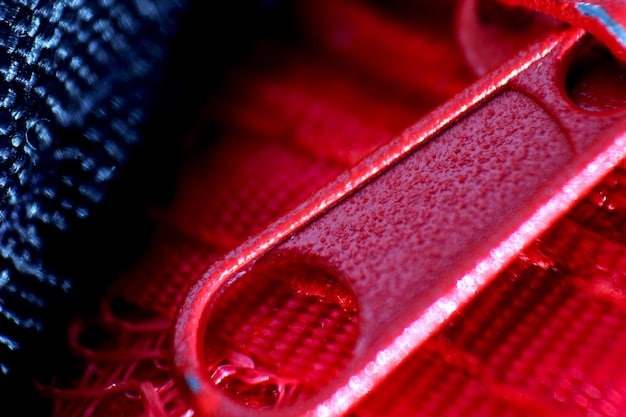
Achieve peak performance and stable overclocking by understanding the critical steps and benefits of installing a liquid cooling system in your gaming rig.
In the pursuit of ultimate gaming performance, enthusiasts often turn to overclocking, pushing their hardware beyond factory default settings. This quest for extra frames and reduced latency, however, generates significant heat, which can compromise system stability and component longevity. This is where a robust cooling solution becomes not just an advantage, but a necessity. A properly installed liquid cooling system, a sophisticated alternative to traditional air cooling, offers superior thermal management, enabling higher and more stable overclocks while often reducing system noise. Dive into this essential guide to learn how to prepare your setup, choose the right components, and expertly install a liquid cooling system, transforming your gaming experience by unlocking your rig’s true potential, all while following the critical steps of
Understanding the “Why”: The Benefits of Liquid Cooling for Overclocking
Before diving into the intricate details of installation, it’s crucial to grasp why liquid cooling stands as the preferred choice for serious overclockers. The fundamental principle is its superior heat transfer capability compared to air. Water, or a specialized coolant, has a significantly higher specific heat capacity than air, meaning it can absorb and transfer more heat energy away from hot components like your CPU and GPU.
This enhanced thermal efficiency translates directly into lower operating temperatures for your core components, even under heavy loads and aggressive overclocks. Lower temperatures prevent thermal throttling, a self-preservation mechanism where hardware automatically downclocks to avoid overheating, thus sustaining peak performance for longer durations. Furthermore, liquid cooling systems often operate much quieter than high-performance air coolers. While air coolers rely on high RPM fans to dissipate heat, liquid cooling uses pumps and radiators that can manage heat with less fan noise, leading to a more immersive and less distracting gaming environment.
Enhanced Thermal Performance
Liquid cooling systems excel at dissipating heat, a critical factor for successful and stable overclocking. Unlike air coolers that rely on direct contact and fin arrays to transfer heat, liquid systems actively circulate coolant, drawing heat away from the processor or graphics card to a radiator where it’s expelled.
- Superior Heat Dissipation: Coolant absorbs heat more efficiently than air, leading to lower component temperatures.
- Consistent Performance: Prevents thermal throttling, allowing your system to maintain boosted clock speeds during demanding tasks.
- Lower Idle Temperatures: Even when not under heavy load, liquid cooling often keeps components cooler, extending their lifespan.
This sustained low temperature environment is paramount for achieving high, stable overclocks, ensuring your system performs optimally without sudden drops in frame rates or performance hiccups. The ability to push your CPU or GPU to its limits without fear of overheating is the primary draw for enthusiasts investing in these advanced cooling solutions, optimizing every gigahertz for that competitive edge.
Acoustic Advantages and Aesthetics
Beyond raw performance, liquid cooling offers significant benefits in terms of system acoustics and visual appeal. Large, power-hungry air coolers often require high-speed fans to manage heat, which can generate a considerable amount of noise. Liquid cooling, by design, displaces heat to a larger surface area (the radiator) where fans can operate at lower RPMs, resulting in a much quieter system.
- Reduced Noise Levels: Smaller, slower-spinning fans on radiators often produce less noise than large CPU air cooler fans.
- Clean Aesthetic: Eliminates bulky air coolers, clearing space around the CPU socket and allowing for a more streamlined interior.
- Customization Opportunities: Offers options for colored coolants, RGB lighting, and custom tubing layouts, enhancing the visual appeal of your build.
The sleek appearance of a liquid cooling loop, with its elegant tubing and compact water blocks, also contributes to a cleaner and more sophisticated build aesthetic. For those who invest in custom PC cases with tempered glass panels, the visual impact of a custom liquid cooling loop can be a significant draw, turning the PC into a showpiece rather than just a functional machine, all while providing superior cooling performance.
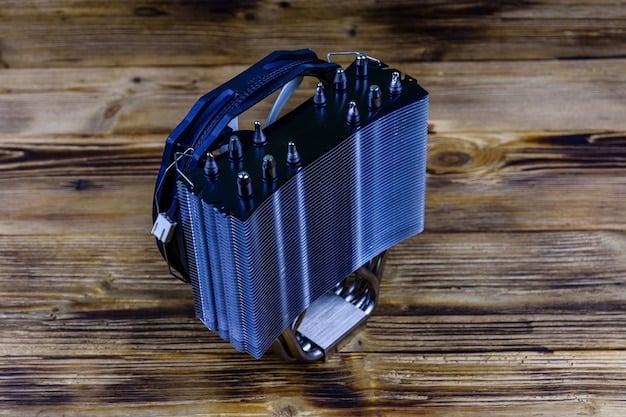
Pre-Installation Checklist: Gathering Your Arsenal
Before any screwdriver touches metal, meticulous preparation is key. This phase involves selecting the right components and ensuring you have all the necessary tools at hand. A well-planned liquid cooling build not only simplifies the installation process but also guarantees optimal performance and prevents potential headaches down the line. Understanding your system’s specifications and your overclocking goals will guide your component choices, from radiator size to pump power.
Your existing PC case must be compatible with the radiator size you intend to use. Radiators come in various sizes (e.g., 120mm, 240mm, 360mm), named after the number of 120mm fan slots they occupy. Larger radiators offer better heat dissipation but require more space. Consider your CPU and GPU heat output; high-end, heavily overclocked components will benefit from larger or multiple radiators. Moreover, choosing between an All-in-One (AIO) liquid cooler and a custom loop depends on your budget, technical comfort, and performance aspirations, with custom loops offering the ultimate in cooling and customization.
Required Tools and Materials
A successful installation hinges on having the right tools. Beyond your standard PC building toolkit, liquid cooling introduces a few specialized items.
- Anti-static Wrist Strap: Essential for preventing electrostatic discharge (ESD) that can damage sensitive components.
- Screwdriver Set: Phillips head screwdrivers of various sizes will be your most used tools.
- Thermal Paste Applicator: Many water blocks come with paste pre-applied or include a small tube; however, a high-quality thermal paste will improve performance.
- Microfiber Cloth and Isopropyl Alcohol: For cleaning old thermal paste off components.
- Zip Ties and Cable Management Solution: To keep tubing and cables neat and optimize airflow.
- Funnel and Coolant Fill Bottle: For mess-free filling of the loop.
- Leak Tester (Optional but Recommended for Custom Loops): A crucial tool for pressurizing the loop and checking for leaks before introducing coolant.
- Tubing Cutter (for Custom Loops): Essential for precise, clean cuts on hard or soft tubing.
Having these items readily available will streamline the installation process, preventing frustrating interruptions and ensuring a smooth, meticulous build. Prioritizing organization and having everything within reach before you begin disassembling your system will save significant time and effort during this complex upgrade.
Selecting Your Liquid Cooling Components
The heart of your liquid cooling system lies in its components. Each piece plays a vital role in the overall performance and reliability of your cooling solution. Careful consideration must be given to compatibility, performance, and future scalability.
- CPU Water Block: Designed to mount directly onto your CPU, absorbing its heat. Ensure it’s compatible with your CPU socket (e.g., Intel LGA1700, AMD AM5).
- GPU Water Block (Optional): For cooling your graphics card. These are typically specific to each GPU model, so verify compatibility carefully.
- Radiator(s): Where heat picked up by the coolant is dissipated into the ambient air. Size influences cooling capacity. Multiple radiators or larger ones provide better performance.
- Pump/Reservoir Combo or Separate Units: The pump circulates the coolant, while the reservoir holds excess coolant and aids in filling/bleeding the system. Combo units save space.
- Tubing and Fittings: Choose between soft tubing (easier to install) or hard tubing (more aesthetically pleasing, but harder to bend and cut). Fittings secure the tubing to other components.
- Coolant: Specialized coolants often contain anti-corrosion and anti-algae additives. Distilled water with additives is also an option.
Researching component reviews and compatibility lists specific to your motherboard and case is paramount. Investing in quality components from reputable brands like EKWB, Corsair, or Cooler Master ensures reliability and longevity. Remember, a liquid cooling system is an ecosystem where each component must work in harmony for optimal thermal performance and system stability, especially when pushing your hardware to its overclocking limits.
Disassembly and Preparation: Clearing the Path
With all your components and tools ready, the next step involves preparing your PC for the liquid cooling installation. This often means disassembling existing cooling solutions and making space for the new hardware. Patience and a methodical approach are crucial here to avoid damaging any components.
Begin by fully powering down your PC and unplugging it from the wall. Disconnect all peripherals. Move your PC to a clean, well-lit workspace with plenty of room. Open the side panel and ground yourself using an anti-static wrist strap. Carefully remove your existing CPU cooler – whether it’s a stock cooler, an air cooler, or an AIO. This will expose your CPU, allowing you to clean off the old thermal paste. Use isopropyl alcohol and a microfiber cloth to gently wipe the CPU’s integrated heat spreader (IHS) and the base of your old cooler until they are spotless. This ensures optimal contact and heat transfer when you install the new water block.
Removing Existing Cooling and Components
The initial phase of the installation requires careful removal of your current cooling solution and any components that might obstruct the new liquid cooling hardware. This part of the process demands a steady hand and attention to detail to protect your delicate PC components. Documenting your current setup with photos can be helpful for reassembly or troubleshooting.
- Power Down and Unplug: Absolutely essential for safety and preventing electrical damage.
- Remove Side Panels: Access the interior of your PC case.
- Disconnect Cables: Unplug any fan headers, pump headers, or RGB cables connected to your old cooler.
- Unmount Existing Cooler: Follow the manufacturer’s instructions for your specific cooler to gently remove it from the CPU socket. For air coolers, this usually involves unscrewing retention brackets; for AIOs, it’s typically four screws holding the pump/block to the motherboard.
Once the cooler is removed, carefully unseat your graphics card if a GPU water block installation is planned, or if its size will interfere with radiator or pump placement. Some cases may also require removing drive cages or other modular parts to accommodate larger radiators or reservoirs. Taking your time here prevents accidental scrapes or damage to your delicate motherboard and other components, ensuring a smooth transition to the next phase of your build.
Cleaning and Prepping Surfaces
The efficiency of your liquid cooling system largely depends on optimal contact between the water block and the components it’s cooling. This means thoroughly cleaning all surfaces where thermal paste will be applied. Residual thermal paste or dust can create air gaps, acting as insulators and reducing heat transfer efficiency, directly impacting your overclocking stability.
- CPU IHS Cleaning: Apply a small amount of high-purity isopropyl alcohol (90%+) to a clean, lint-free microfiber cloth. Gently wipe away all traces of old thermal paste from the CPU’s integrated heat spreader.
- GPU Die Cleaning (if applicable): For GPU water block installations, carefully clean the GPU die after removing the stock cooler. Be extra cautious around the small surface-mounted components surrounding the die.
- Water Block Base: If your new water block has any pre-applied thermal paste, remove it as well if you plan to use your own, higher-quality paste. Gently clean the copper or nickel-plated base of the water block.
Ensuring these surfaces are pristine clean and dry before applying new thermal paste is a minor step with major implications for your cooling performance. It forms the critical interface for efficient heat transfer, laying the groundwork for stable and higher overclocks by maximizing the thermal conductivity from your hot components to the liquid cooling loop.
Assembly: Bringing Your Loop to Life
This is arguably the most exciting stage: assembling the liquid cooling components inside your PC. This involves mounting water blocks, radiators, pumps, and reservoirs, and then connecting them with tubing and fittings. Attention to detail and adherence to proper installation sequences are vital for a leak-free and high-performance loop.
Start by mounting the CPU water block onto your processor. Apply thermal paste using your preferred method (pea, line, or spreading) and secure the block firmly according to the manufacturer’s instructions, ensuring even pressure. Next, mount your radiator(s) into your case, typically on the top, front, or rear. Ensure the fans are oriented correctly for airflow (intake or exhaust). Then, install your pump and reservoir. Many cases have dedicated mounting points, or you might need a universal bracket. Lastly, begin planning your tubing runs. For soft tubing, cut to length and secure with compression fittings. For hard tubing, precise measurements and careful bending are required, along with appropriate fittings.
Mounting Water Blocks and Radiators
Properly installing your water blocks and radiators is foundational to the efficiency of your liquid cooling system. Errors here can lead to poor thermal contact or insufficient heat dissipation, undermining your overclocking efforts. Take your time, consult your component manuals, and aim for precision.
- CPU Water Block: Follow the specific instructions for your CPU socket and water block. Ensure the backplate (if used) is correctly aligned. Apply thermal paste evenly, then place the water block and tighten the mounting screws in a crisscross pattern until snug, but don’t overtighten.
- GPU Water Block (if applicable): This is often more complex, involving disassembling the entire stock GPU cooler. Carefully remove all screws, disconnect fan headers, and slowly separate the cooler from the PCB. Clean off residual thermal pads and paste. Apply new thermal pads to memory modules and VRMs as specified, then apply thermal paste to the GPU die. Mount the water block securely.
- Radiator Installation: Identify the best mounting points in your case. Attach the radiator fans to the radiator (PULL or PUSH configuration) before mounting the assembly into your case. Secure the radiator with screws, ensuring it doesn’t obstruct other components or airflow paths unnecessarily.
Paying close attention to torquing screws evenly for water blocks prevents uneven pressure on the components. For radiators, consider fan orientation carefully: pulling air in (intake) can introduce warmer air but cool components effectively, while pushing air out (exhaust) removes heat but can increase internal case temperatures. Your choice impacts overall system thermals, influencing your stable overclocking potential.
Routing Tubing and Connecting Components
The tubing is the circulatory system of your liquid cooling loop, connecting all components in a logical flow. While there’s no single “correct” flow direction for general CPU/GPU loops, a common path is reservoir > pump > CPU > GPU > radiator(s) > reservoir. Planning your routing before you cut or bend minimizes wasted tubing and creates a cleaner aesthetic.
- Soft Tubing: Cut tubing to length, allowing for some slack to prevent kinks, but not so much that it sags. Secure with compression fittings, ensuring the barb is fully seated and the compression ring is tightened. Double-check for proper connection.
- Hard Tubing: This requires more skill. Measure carefully, then use a tubing cutter for clean, straight cuts. Heat the tubing with a heat gun or bending kit, then slowly and precisely bend it to the desired angle. Allow it to cool before fitting. Use appropriate O-rings and push-to-connect fittings, ensuring a secure seal.
- Fittings: Ensure all fittings are tightened properly. Finger-tight is often sufficient for most, but a light tug with a fitting tool (not overtightened) can provide extra security.
Take your time with tubing routing; patience here prevents leaks and ensures optimal coolant flow. A well-routed loop looks professional and performs effectively. Avoid sharp bends that restrict flow, especially with soft tubing, and always ensure every fitting is snug before moving on. This stage is crucial for the reliability and aesthetics of your liquid cooling setup.
Leak Testing and Filling: The Moment of Truth
This is arguably the most critical step in the entire process. Skipping or rushing the leak test can lead to catastrophic damage to your expensive PC components. A thorough leak test ensures your loop is sealed and ready for coolant, providing peace of mind and protecting your investment. This stage demands patience and meticulous observation.
For custom loops, a dedicated air pressure leak tester is highly recommended. Connect it to your loop, pressurize to the manufacturer’s recommended PSI (usually 0.3-0.5 PSI, careful not to over-pressurize), and monitor the gauge for at least 15-30 minutes, or even longer (hours) for absolute certainty. A drop in pressure indicates a leak. If you don’t have a pressure tester (or it’s an AIO), proceed with filling your loop using only distilled water initially, or a non-conductive testing fluid. Fill the reservoir, turn on the pump (jumpering the PSU to turn on independently of the motherboard is safest), and let the pump run for several hours, or even 24 hours, frequently checking for drips or damp spots. Tipping the case gently can help expel air bubbles.
The Leak Test Protocol
There are two primary methods for leak testing a liquid cooling loop: air pressure testing and coolant testing. Air pressure testing is generally preferred for custom loops as it avoids introducing liquid to a potentially leaky system, thus mitigating risk.
- Air Pressure Testing (Recommended for Custom Loops):
- Connect the leak tester to an available port on your loop.
- Pump air into the loop until the gauge reaches the recommended pressure (e.g., 0.5 PSI). Do NOT over-pressurize.
- Monitor the gauge for a minimum of 15-30 minutes, ideally several hours or overnight. Any drop in pressure indicates a leak.
- If a leak is detected, use soapy water to spray over fittings and connections; bubbles will indicate the leak source. Tighten or re-seat the problematic fitting.
- Coolant Testing (for AIOs or as a secondary check for Custom Loops):
- Fill the reservoir slowly with coolant or distilled water.
- Disconnect all components from the PSU except the pump (use a PSU jumper for this).
- Power on the pump in short bursts, allowing coolant to fill the loop. Never run the pump dry.
- Once the loop is full, let the pump run continuously for 6-24 hours. Place paper towels or highly absorbent material under all fittings and components.
- Regularly inspect for any signs of leaks. Address any drips immediately.
Patience during the leak test phase is paramount. Rushing can result in damaged components and a significant investment lost. A successful leak test provides the confidence needed to proceed to the final steps and truly
Filling the Loop and Bleeding Air
Once your loop is confirmed leak-free, it’s time to introduce the coolant and ensure all air bubbles are expelled. Air trapped in the loop can cause gurgling noises, reduce flow rate, and diminish cooling performance, potentially impacting your stable overclocks.
- Filling: Slowly pour your chosen coolant into the reservoir. Fill it to about 3/4 capacity.
- Initial Pump Cycles: With the PSU still jumpered (only pump powered), turn the pump on and off in short bursts (1-2 seconds) to prime it and start circulating coolant. Never let the pump run dry.
- Bleeding Air:
- Continuous Circulation: Once the pump has primed, let it run continuously.
- Tilt the Case: Gently tilt and rock your PC case in different directions. This helps dislodge trapped air bubbles from the radiator, water blocks, and tubing.
- Top Off Reservoir: As air bleeds out, the coolant level in the reservoir will drop. Continuously top off the reservoir to prevent the pump from running dry.
- Repeat: Continue this process for several hours, or overnight, until most micro-bubbles disappear and constant bubbling in the reservoir stops.
A fully bled loop ensures optimal coolant flow and maximum heat transfer efficiency. While some small bubbles might persist for a few days of operation, the majority will settle in the reservoir within the first 24 hours. A quiet, bubble-free loop is a sign of a perfectly filled and prepared liquid cooling system, now ready for serious overclocking.
Post-Installation: Optimization and Overclocking
With the liquid cooling system successfully installed and tested, the final stage involves reconnecting all components, powering up your PC, and then embarking on the exciting journey of overclocking. This phase focuses on maximizing your system’s performance while maintaining thermal stability, a direct benefit of your new cooling solution.
Reconnect all power cables, SATA cables, and front panel headers to your motherboard. Double-check all connections. Once everything is reconnected, boot your PC. Monitor temperatures and fan speeds using software like HWMonitor or AIDA64. Ensure the pump is running and there are no immediate signs of issues. Begin your overclocking journey incrementally, starting with small voltage and frequency adjustments in your BIOS/UEFI. Stress test each new setting using benchmarks like Prime95 (CPU) or FurMark (GPU), monitoring temperatures closely. The goal is to find the highest stable overclock that maintains safe operating temperatures, allowing you to fully
Initial Power-On and System Checks
The moment of truth arrives after filling and bleeding the loop. Before diving into overclocking, it’s crucial to perform initial system checks to ensure everything is functioning as expected and to verify the new cooling solution is working optimally. This step provides a baseline for your performance and temperature monitoring.
- Double-Check Connections: Before hitting the power button, meticulously verify all power cables, data cables, and new cooling component headers (pump, fan, RGB) are securely connected.
- First Boot: Power on your PC. Listen for any unusual noises. Observe fan spin and pump operation. Navigate to your BIOS/UEFI immediately and check CPU and system temperatures. They should be at or near idle levels.
- Operating System Load: Allow your PC to boot into the operating system. Open monitoring software (e.g., HWMonitor, HWiNFO64, CAM, or built-in motherboard tools). Confirm CPU and GPU temperatures are low at idle.
- Pump and Fan Control: Verify your pump and radiator fans are recognized and controllable via your motherboard’s BIOS or dedicated software. Set a pump speed profile (often constant max RPM for reliability) and a fan curve that balances cooling performance with noise levels.
Address any issues immediately. If temperatures are abnormally high, power down and recheck water block mounting and thermal paste application. If the pump isn’t recognized, check its power connection. A successful initial boot with stable idle temperatures confirms your hardware is correctly installed and your liquid cooling system is operational, paving the way for safe overclocking.
Overclocking with Confidence
With your liquid cooling system professionally installed and confirmed operational, you can now approach overclocking with a significant advantage: superior thermal headroom. This allows for higher stable clock speeds and potentially lower voltages for the same performance, extending component lifespan and stability.
- Incremental Overclocking: Start with small increases in CPU multiplier and/or base clock (BCLK) in your BIOS/UEFI. For GPU overclocking, use tools like MSI Afterburner or ASUS GPU Tweak.
- Voltage Adjustments: Gradually increase CPU Vcore (voltage) or GPU core voltage as needed to maintain stability at higher frequencies. Always keep voltages within safe limits recommended by the manufacturer or reputable online guides for your specific hardware.
- Stress Testing: After each small adjustment, run stability tests.
- CPU: Prime95 (Small FFTs), OCCT, Cinebench. Run for at least 15-30 minutes, ideally longer.
- GPU: FurMark, Heaven Benchmark, 3DMark.
- Monitor Temperatures: Keep a close eye on your CPU and GPU temperatures during stress tests. Aim to keep temperatures below 80-85°C under full load, though lower is always better.
- Observe Performance: Run your favorite games or demanding applications to see the real-world impact of your overclock.
Liquid cooling significantly raises the thermal ceiling, allowing your components to reach their full potential. The cooling power means you can push clock speeds further and sustain peak performance for longer, enhancing your gaming and productivity. Remember that every chip overclocks differently (silicon lottery), so patience and thorough testing are key to finding your unique system’s optimal stable overclock, truly letting you
Maintenance and Longevity: Keeping Your Cool
Installing a liquid cooling system is an investment, and like any investment, it requires periodic maintenance to ensure its longevity and continued optimal performance. Regular checks and proactive care can prevent issues, ensuring your system continues to provide superior cooling for years to come.
The primary maintenance task for custom liquid cooling loops is a coolant flush and refill every 6 to 12 months. Over time, coolants can break down, and additives can deplete, leading to algae growth or corrosion, which compromises performance and can damage components. This process involves draining the old coolant, flushing the system with distilled water (and possibly a cleaning solution), and then refilling with fresh coolant. Beyond coolant changes, it’s also wise to inspect your tubing and fittings for any signs of wear, discoloration, or potential leaks. Dust accumulation on radiators can impede airflow, so regular cleaning of radiator fins and fans with compressed air is also vital. For AIOs, maintenance is minimal, primarily involving dusting the radiator fins, as they are sealed units.
Routine Checks and Coolant Management
Proactive maintenance is key to the long-term health and performance of your liquid cooling system. Neglecting these routine checks can lead to degraded performance, system damage, and costly repairs. Establishing a regular maintenance schedule ensures your rig stays cool and performs optimally, even under the stress of consistent overclocking.
- Coolant Level and Clarity: Regularly check your reservoir’s coolant level. If it’s consistently dropping, investigate for subtle leaks. Observe coolant clarity: discoloration or cloudiness are signs that a flush is needed.
- Coolant Flush and Refill Cycle: For custom loops, plan to drain, flush, and refill your loop with fresh coolant every 6-12 months. This prevents build-up, algae growth, and maintains the protective additives. Use distilled water for flushing, and consider a dedicated loop cleaner.
- Tubing and Fittings Inspection: Periodically inspect all tubing for signs of kinking, discoloration, or hardening. Check all fittings for tightness and any signs of weeping around the seals. Address any concerns immediately.
- Pump Noise: Pay attention to any unusual pump noises. A gurgling or grinding sound might indicate air bubbles, a low coolant level, or a failing pump.
Adhering to these routine checks and coolant management practices safeguards your cooling system. It’s a small investment of time that pays dividends in sustained performance, preventing potential failures that could otherwise result in damaged components or extended downtime, ensuring your overclocked system remains a high-performance powerhouse.
Cleaning Radiators and Fans
Even with closed loops, dust is the silent enemy of cooling performance. Over time, dust accumulates on radiator fins and fan blades, creating an insulating layer that traps heat and restricts airflow. This directly impacts your system’s ability to dissipate heat, leading to higher component temperatures and potentially reduced stable overclocking potential.
- Dusting Frequency: Depending on your environment, cleaning your radiators and fans should be done every 1-3 months. More frequent cleaning may be necessary if your PC is in a dusty location or if you have pets.
- Tools for Cleaning:
- Compressed Air: The most effective tool. Use short bursts from a distance, blowing in the direction of natural airflow (usually pushing dust outwards). Hold fan blades gently to prevent them from spinning too fast.
- Soft Brush/Vacuum: For larger accumulations, a soft brush or a low-suction vacuum (be careful not to create static) can help dislodge dust before using compressed air.
- Microfiber Cloth: For wiping down fan blades and radiator surfaces.
- Radiator Removal (Occasional): For thorough cleaning, you might occasionally need to remove the radiator from the case to clean both sides of its fins. This is typically only necessary once or twice a year, or when performing a coolant flush.
Maintaining clean radiators and fans ensures unrestricted airflow, allowing your liquid cooling system to operate at peak efficiency. This simple, yet crucial, maintenance task significantly contributes to the longevity and consistent high performance of your overclocked gaming rig, preventing heat throttling and maximizing those precious extra frames per second.
Troubleshooting Common Issues: Staying Calm Under Pressure
Even with meticulous installation, problems can occasionally arise. Knowing how to diagnose and address common liquid cooling issues can save you time, money, and frustration. Most problems stem from simple causes, and a systematic approach to troubleshooting can pinpoint the solution quickly.
The most alarming issue is a leak. If you see any fluid, immediately power down your PC and unplug it. Carefully identify the source of the leak, tighten fittings, inspect O-rings, and if necessary, replace a faulty component or tubing section. If your temperatures are higher than expected, despite the liquid cooling, check if the pump is running (listen for it, feel tubing for vibration). Ensure water blocks are securely mounted and thermal paste is properly applied. Verify radiator fans are spinning and correctly configured for airflow. Gurgling noises typically indicate air trapped in the loop; continue the bleeding process until the noise subsides. Systematic troubleshooting will help you resolve these issues and get your rig back to optimal performance.
Dealing with Leaks
A leak is the most feared scenario for any liquid cooling enthusiast. While proper leak testing significantly reduces the risk, sometimes a tiny seep might only manifest after the system has been running for a while. Immediate action is crucial to minimize damage.
- Immediate Action: If you spot any liquid, immediately power down your PC and unplug it from the wall. Do NOT attempt to restart it.
- Locate the Source: Carefully inspect all fittings, tube bends, and the areas around water blocks and the pump/reservoir. Use a bright flashlight. Paper towels placed underneath components during initial run-in can help absorb and pinpoint potential small leaks.
- Common Causes:
- Loose Fittings: The most common cause. Gently tighten fittings, ensuring they are snug but not overtightened.
- Damaged O-Rings: Inspect O-rings inside fittings or on water blocks. Replace if cracked, pinched, or missing.
- Improper Tubing Cut/Bend: For hard tubing, an imprecise cut or an overly sharp bend can lead to stress cracks. For soft tubing, severe kinks can create pressure points.
- Faulty Component: Rarely, a component itself (e.g., a radiator seam, pump housing) might have a manufacturing defect.
- Clean Up and Re-test: Once the leak is fixed, thoroughly clean up any spilled coolant with a microfiber cloth. Allow components ample time to dry. Re-perform a full leak test before powering on your system again.
Patience and a methodical approach are your best allies when dealing with a leak. Rushing can lead to further damage. Addressing the issue directly and performing a thorough re-test ensures your system is safe to operate, preserving your components and your investment in high-performance cooling.
High Temperatures and Poor Performance
If your system temperatures are unexpectedly high after installing liquid cooling, or if your overclocking stability is poor, it indicates a problem with heat dissipation. This could be due to several factors, often correctable with some investigation and adjustment. Proper diagnosis is key to restoring your system’s optimal thermal performance.
- Check Pump Operation:
- Is it running? Listen for a faint hum, or gently feel the pump/tubing for vibrations.
- Is it receiving power? Verify the pump’s power cable is securely connected to the motherboard header or PSU.
- Is it primed? Ensure the loop is fully bled of air, and the reservoir always contains enough coolant. Running the pump dry can damage it.
- Water Block Mount:
- Uneven Pressure: The most common cause of high CPU/GPU temperatures with liquid cooling. Ensure the water block screws are tightened evenly in a crisscross pattern.
- Insufficient Thermal Paste: Re-mount the water block and apply a fresh layer of high-quality thermal paste. Ensure even coverage.
- Radiator Fans:
- Are they spinning? Check all radiator fans. If not, verify power connections and fan speed settings in BIOS/software.
- Correct Airflow: Ensure fans are oriented to push or pull air through the radiator effectively, not against each other or trapped inside the case.
- Dust Accumulation: Clean dust from radiator fins and fan blades regularly.
- Flow Restriction:
- Kinked Tubing: Especially with soft tubing, sharp bends can restrict coolant flow. Reroute or use anti-kink coils.
- Blocked Fin Arrays: Check for any debris or foreign objects within radiator fins.
Systematic troubleshooting of these points will help identify the root cause of high temperatures. Resolving these issues allows your liquid cooling system to perform as intended, providing the necessary thermal headroom to safely
By diligently following these troubleshooting steps, you can effectively address common liquid cooling issues, ensuring your system maintains optimal thermal management and continues to provide the stable, high-performance environment essential for serious overclocking.
Advanced Considerations: Pushing Boundaries Further
Once you’ve mastered the basics and are comfortable with your liquid cooling setup, there are several advanced considerations that can further enhance performance, aesthetics, and long-term reliability. These are often for enthusiasts looking to squeeze every last drop of performance and perfection from their system, reaching beyond typical overclocking limits.
Multi-GPU cooling, for example, involves integrating a second or even third graphics card into your custom loop. This requires additional GPU water blocks, more radiator space, and careful planning of the loop’s flow path to ensure adequate cooling for all components. Delidding involves removing the integrated heat spreader (IHS) from your CPU die, replacing the factory thermal interface material (TIM) with liquid metal, and then resealing the IHS. This can dramatically improve CPU temperatures, especially for overclocking, but it carries a significant risk of damaging the CPU if not done correctly. Exploring these advanced modifications offers a path to truly bespoke cooling and unparalleled performance, though they demand higher levels of expertise and a willingness to take on more complex challenges.
Multi-GPU Cooling and Delidding
For those pushing the absolute limits of performance, integrating multiple GPUs into a liquid cooling loop or delidding a CPU represent the pinnacle of thermal optimization. These advanced techniques provide significant temperature reductions but require a higher degree of technical skill and careful execution.
- Multi-GPU Cooling:
- Complexity: Requires additional GPU water blocks, more radiator capacity (often a dedicated radiator for each GPU), and complex tubing runs.
- Benefits: Significantly lowers GPU temperatures, allowing for higher, more stable overclocks on multiple graphics cards. Distributes heat load more effectively than air cooling.
- Considerations: Ensure your PSU can handle the increased power draw. Case space and airflow planning become even more critical for optimal thermal management.
- CPU Delidding:
- Process: Involves carefully removing the CPU’s Integrated Heat Spreader (IHS) to replace the stock thermal interface material (TIM) with liquid metal, which offers superior thermal conductivity.
- Benefits: Can dramatically drop CPU temperatures (10-20°C or more), allowing for much higher and more stable CPU overclocks, especially on Intel CPUs where the stock TIM can be a bottleneck.
- Risks: This is an advanced and inherently risky mod that can void your CPU warranty and potentially damage the CPU if not performed precisely. Requires specialized tools (a delid tool) and meticulous attention to detail.
While multi-GPU cooling adds layers of complexity to the loop design, CPU delidding is a direct modification to the CPU itself. Both offer substantial performance gains for extreme overclockers, but they are not for the faint of heart. These modifications are typically reserved for those who have mastered the basics of liquid cooling and are seeking every incremental advantage in their quest for ultimate system performance, truly allowing them to
Custom Loop Aesthetics and Modding
Beyond raw performance, a custom liquid cooling loop offers unparalleled opportunities for aesthetic customization and modding. For many enthusiasts, the visual appeal of their PC build is as important as its performance, turning a functional machine into a work of art. This allows for personal expression and unique designs that truly make a rig stand out.
- Colored Coolants: Available in a vast array of colors, including opaque and reactive (UV-reactive) options. Remember to use coolants specifically designed for liquid cooling to avoid issues like staining or gunking.
- RGB/ARGB Lighting: Integrate addressable RGB (ARGB) lighting into water blocks, pumps, reservoirs, and radiators. This allows for synchronized lighting effects throughout the loop and case, creating mesmerizing visual displays.
- Hard Tubing Bending: Mastering hard tubing bends allows for incredibly clean and precise runs, creating a “showcase” look with crisp angles and symmetry. This requires practice, a heat gun, and various bending tools.
- Custom Reservoir Shapes: Beyond standard cylindrical reservoirs, unique, custom-shaped reservoirs (e.g., distro plates) can be integrated into a case, serving both as a functional component and a central aesthetic feature.
- Sleeved Cables: While not directly liquid cooling related, custom sleeved cables complement the clean aesthetic of a liquid-cooled build by minimizing cable clutter and adding pops of color.
Exploring these aesthetic and modding possibilities allows builders to personalize their systems, reflecting their individual style and creativity. From minimalist designs to vibrant, attention-grabbing builds, the flexibility of custom liquid cooling offers endless opportunities to craft a truly unique and visually stunning gaming rig that performs as good as it looks, showcasing the full potential of your optimized build.
| Key Point | Brief Description |
|---|---|
| 🔧 Component Selection | Choose compatible water blocks, radiators, pump/reservoir, tubing, and fittings for optimal performance. |
| 💧 Leak Testing | Crucial step after assembly; use air or coolant testing for 6-24 hours to ensure a sealed loop. |
| 📈 Overclocking Benefits | Liquid cooling enables higher, more stable overclocks due to superior heat dissipation and lower component temperatures. |
| 🛠️ Maintenance | Regular coolant flushes (6-12 months) and fan/radiator cleaning sustain system efficiency and longevity. |
Frequently Asked Questions About Liquid Cooling
▼
Yes, liquid cooling generally offers superior heat dissipation compared to air cooling. This allows your CPU and GPU to maintain lower temperatures under heavy load, preventing thermal throttling and enabling higher, more stable overclocking frequencies for extended periods. It provides greater thermal headroom to push your hardware limits.
▼
For custom liquid cooling loops, it’s recommended to perform a coolant flush and refill every 6 to 12 months. This prevents buildup and ensures the integrity of the coolant’s additives. AIO coolers are sealed and require almost no maintenance beyond occasional dusting of the radiator fins to ensure good airflow.
▼
Installing an AIO liquid cooler is relatively straightforward for most PC builders. Custom liquid cooling, however, is more complex and involves planning, tube bending, and careful leak testing. While many enthusiasts do it themselves with proper research, a professional installer might be advisable if you’re new to PC building or uncomfortable with the intricacies to avoid damage.
▼
The primary risk is a coolant leak, which can damage internal components. However, this risk is significantly mitigated by thorough leak testing before powering on your system. Other minor risks include pump failure or air bubbles, but these are generally less severe and often easily resolvable with proper setup and maintenance.
▼
While liquid cooling systems are generally much quieter than high-performance air coolers, they are not completely silent. They still involve pumps that generate a faint hum and fans on the radiator that produce airflow noise. However, because heat is displaced to larger radiators, fans can often run at lower RPMs, resulting in significantly reduced noise output compared to air cooling.
Conclusion
Embracing a liquid cooling system is a transformative step for any serious PC enthusiast or gamer looking to push their hardware to its limits. This comprehensive guide, “Boost Your Rig: A Step-by-Step Guide to Installing a Liquid Cooling System for Overclocking,” has covered every crucial aspect, from understanding the profound benefits of superior thermal management to the meticulous process of component selection, installation, and essential maintenance. By diligently following each stage, from careful disassembly and preparation to the critical leak testing phase and beyond, you empower your system to achieve higher, more stable overclocks, unlock peak performance, and operate with greater acoustic efficiency. The investment in time and effort translates directly into a more powerful, reliable, and aesthetically pleasing gaming rig ready to perform under the most demanding conditions. Remember, liquid cooling is not just about raw power; it’s about refining your system, extending its lifespan, and truly unleashing its full potential for an unparalleled gaming experience.
